
Intel Celeron G5905 Benchmark, test e specifiche
Ultimo aggiornamento:
Il Intel Celeron G5905 ha 2 core con 2 thread ed è basato sul 9. Gene della serie Intel Celeron. Il processore utilizza una scheda madre con il socket LGA 1200 ed è stato rilasciato in Q3/2020. Intel Celeron G5905 ottiene 907 punti nel benchmark single-core di Geekbench 5. Nel benchmark multi-core di Geekbench 5, il risultato è 1.671 punti.

| Cognome: | Intel Celeron G5905 |
|---|---|
| Famiglia: | Intel Celeron (165) |
| Gruppo CPU: | Intel Celeron G5000 (8) |
| Architettura : | Comet Lake S |
| Segmento: | Desktop / Server |
| Generazione: | 9 |
| Predecessore: | Intel Celeron G5900 |
| Successore: | -- |
CPU Cores e frequenza di base
Intel Celeron G5905 ha 2 core CPU e può calcolare 2 thread in parallelo. La frequenza di clock di Intel Celeron G5905 è 3,50 GHz. Il numero di core della CPU influisce notevolmente sulla velocità del processore ed è un importante indicatore delle prestazioni.
| CPU Cores / Threads: | 2 / 2 |
|---|---|
| Architettura principale: | normal |
| Cores: | 2x |
| Hyperthreading / SMT: | No |
|---|---|
| Overclocking: | No |
| Frequenza: | 3,50 GHz |
| Turbo Frequenza (1 Core ): | -- |
| Turbo Frequenza (2 Cores): | -- |
Grafica interna
Intel Celeron G5905 ha una grafica integrata, chiamata iGPU in breve. Nello specifico, Intel Celeron G5905 utilizza Intel HD Graphics 610, che ha 96 texture shader e 12 unità di esecuzione. L'iGPU utilizza la memoria principale del sistema come memoria grafica e si trova sul die del processore.
| nome GPU: | Intel HD Graphics 610 |
|---|---|
| Frequenza GPU : | 0,35 GHz |
| GPU (Turbo ): | 1,05 GHz |
| Unità di esecuzione: | 12 |
| Shader: | 96 |
| Hardware Raytracing: | No |
| Data di lancio : | Q3/2016 |
| Max. visualizzazioni: | 3 |
|---|---|
| Generation: | 9.5 |
| Direct X: | 12 |
| Tecnologia : | 14 nm |
| Max. GPU Memoria: | 32 GB |
| Frame Generation: | No |
Hardware codec support
Un codec fotografico o video accelerato nell'hardware può accelerare notevolmente la velocità di lavoro di un processore e prolungare la durata della batteria di notebook o smartphone durante la riproduzione di video.
| h265 / HEVC (8 bit): | Decodificare / Codificare |
|---|---|
| h265 / HEVC (10 bit): | Decodificare / Codificare |
| h264: | Decodificare / Codificare |
| VP8: | Decodificare / Codificare |
| VP9: | Decodificare / Codificare |
| AV1: | No |
|---|---|
| AVC: | Decodificare / Codificare |
| VC-1: | Decodificare |
| JPEG: | Decodificare / Codificare |
Memoria & PCIeIl processore può utilizzare fino a 128 GB memoria in 2 (Dual Channel) canali di memoria. La larghezza di banda massima della memoria è 42,7 GB/s. Il tipo di memoria e la quantità di memoria possono influire notevolmente sulla velocità del sistema. |
|
| Tipo di memoria : | Banda di memoria: |
|---|---|
| DDR4-2666 | 42,7 GB/s |
| Max. Memoria: | 128 GB |
| Canali di memoria : | 2 (Dual Channel) |
| ECC: | Si |
| PCIe: | 3.0 x 16 |
| PCIe Larghezza di banda: | 15,8 GB/s |
Gestione termicaLa potenza di progettazione termica (TDP in breve) del processore è 58 W. Il TDP specifica la soluzione di raffreddamento necessaria per raffreddare sufficientemente il processore. Il TDP di solito dà un'idea approssimativa dell'effettivo consumo energetico della CPU. |
|
|---|---|
| TDP (PL1 / PBP): | 58 W |
| TDP (PL2): | -- |
| TDP up: | -- |
| TDP down: | -- |
| Tjunction max.: | 100 °C |
Dettagli tecnici
Il Intel Celeron G5905 è realizzato in 14 nm. Più piccolo è il processo di produzione di una CPU, più è moderna ed efficiente dal punto di vista energetico. Nel complesso, il processore ha 4,00 MB cache. Una cache di grandi dimensioni può accelerare notevolmente la velocità del processore in alcuni casi, ad esempio nei giochi.
| Tecnologia : | 14 nm |
|---|---|
| Design a chip: | Monolitico |
| Presa: | LGA 1200 |
| L2-Cache: | -- |
| L3-Cache: | 4,00 MB |
| AES-NI: | Si |
| Sistemi operativi: | Windows 10, Windows 11, Linux |
| Virtualizzazione: | VT-x, VT-x EPT, VT-d |
|---|---|
| Set di istruzioni (ISA): | x86-64 (64 bit) |
| Estensioni ISA: | SSE4.1, SSE4.2 |
| Data di lancio : | Q3/2020 |
| Prezzo di rilascio: | 60 $ |
| Numero di parte: | -- |
| Documenti: | Scheda tecnica |
Valuta questo processore
Risultati di benchmark

I risultati del benchmark per Intel Celeron G5905 sono stati attentamente controllati da noi. Pubblichiamo solo risultati di benchmark che sono stati creati da noi o che sono stati inviati da un visitatore e poi controllati da un membro del team. Tutti i risultati sono basati e rispettano le nostre linee guida di benchmark.
Cinebench R23 (Single-Core)
Cinebench R23 è il successore di Cinebench R20 ed è anch'esso basato su Cinema 4D. Cinema 4D è un software usato a livello mondiale per creare forme in 3D. Il test single-core utilizza solo un nucleo elaborativo della CPU. A tal fine, il numero di nuclei elaborativi o la capacità di hyperthreading non sono rilevanti.
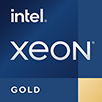
|
Intel Xeon Gold 6132
14C 28T @ 3,70 GHz |
||

|
Intel Pentium G4560
2C 4T @ 3,50 GHz |
||
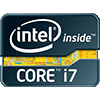
|
Intel Core i7-4930K
6C 12T @ 3,90 GHz |
||
|
|
Intel Celeron G5905
2C 2T @ 3,50 GHz |
||

|
Intel Celeron G5920
2C 2T @ 3,50 GHz |
||
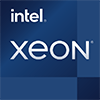
|
Intel Xeon E3-1231 v3
4C 8T @ 3,80 GHz |
||

|
Intel Core i5-7360U
2C 4T @ 3,60 GHz |
||
Cinebench R23 (Multi-Core)
Cinebench R23 è il successore di Cinebench R20 ed è anch'esso basato su Cinema 4D. Cinema 4D è un software usato a livello mondiale per creare forme in 3D. Il test multi-core coinvolge tutti i nuclei elaborativi della CPU e si avvale del hyperthreading.

|
AMD Athlon II X4 860K
4C 4T @ 4,00 GHz |
||

|
Intel Core i5-8265U
4C 8T @ 2,30 GHz |
||

|
AMD FX-9830P
4C 4T @ 3,40 GHz |
||
|
|
Intel Celeron G5905
2C 2T @ 3,50 GHz |
||

|
Intel Celeron G5920
2C 2T @ 3,50 GHz |
||
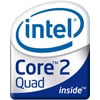
|
Intel Core 2 Quad Q9550
4C 4T @ 2,83 GHz |
||

|
Intel Pentium Silver J5040
4C 4T @ 2,40 GHz |
||
Geekbench 5, 64bit (Single-Core)
Geekbench 5 è un benchmark multi-piattaforma che usa in modo intensivo la memoria del sistema.Il test single-core utilizza solo un nucleo elaborativo della CPU. A tal fine, il numero di nuclei elaborativi o la capacità di hyperthreading non sono rilevanti.

|
Intel Core i7-4940MX
4C 8T @ 3,90 GHz |
||

|
Intel Core i5-8265U
4C 8T @ 3,90 GHz |
||
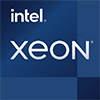
|
Intel Xeon E5-2680 v3
12C 24T @ 3,30 GHz |
||
|
|
Intel Celeron G5905
2C 2T @ 3,50 GHz |
||

|
Intel Celeron G5920
2C 2T @ 3,50 GHz |
||

|
Intel Core i7-7700T
4C 8T @ 3,80 GHz |
||

|
Intel Core i7-4960HQ
4C 8T @ 3,80 GHz |
||
Geekbench 5, 64bit (Multi-Core)
Geekbench 5 è un benchmark multi-piattaforma che usa in modo intensivo la memoria del sistema.Il test multi-core coinvolge tutti i nuclei elaborativi della CPU e si avvale del hyperthreading.

|
Intel Core i3-10110Y
2C 4T @ 2,80 GHz |
||

|
Intel Pentium G4560T
2C 4T @ 2,90 GHz |
||

|
Qualcomm Snapdragon 690 5G
8C 8T @ 2,00 GHz |
||
|
|
Intel Celeron G5905
2C 2T @ 3,50 GHz |
||

|
Intel Celeron G5920
2C 2T @ 3,50 GHz |
||

|
Intel Core i3-7100H
2C 4T @ 3,00 GHz |
||

|
Intel Core i5-6360U
2C 4T @ 3,00 GHz |
||
Cinebench R20 (Single-Core)
Cinebench R20 è il successore di Cinebench R15 ed è anch'esso basato su Cinema 4D. Cinema 4D è un software usato a livello mondiale per creare forme in 3D. Il test single-core utilizza solo un nucleo elaborativo della CPU. A tal fine, il numero di nuclei elaborativi o la capacità di hyperthreading non sono rilevanti.
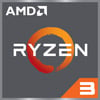
|
AMD Ryzen 3 2300U
4C 4T @ 3,40 GHz |
||
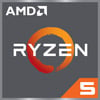
|
AMD Ryzen 5 2500U
4C 8T @ 3,60 GHz |
||

|
Intel Pentium G4600
2C 4T @ 3,60 GHz |
||
|
|
Intel Celeron G5905
2C 2T @ 3,50 GHz |
||

|
Intel Core i5-4460
4C 4T @ 3,40 GHz |
||
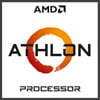
|
AMD Athlon PRO 300GE
2C 4T @ 3,40 GHz |
||

|
AMD Athlon 220GE
2C 4T @ 3,40 GHz |
||
Cinebench R20 (Multi-Core)
Cinebench R20 è il successore di Cinebench R15 ed è anch'esso basato su Cinema 4D. Cinema 4D è un software usato a livello mondiale per creare forme in 3D. Il test multi-core coinvolge tutti i nuclei elaborativi della CPU e si avvale del hyperthreading.

|
Intel Celeron J4105
4C 4T @ 2,40 GHz |
||

|
Intel Core i5-8210Y
2C 4T @ 2,80 GHz |
||

|
Intel Core i7-5600U
2C 4T @ 3,10 GHz |
||
|
|
Intel Celeron G5905
2C 2T @ 3,50 GHz |
||

|
Intel Core i3-1000NG4
4C 8T @ 3,20 GHz |
||

|
AMD A8-5600K
4C 4T @ 3,90 GHz |
||

|
AMD Phenom II X4 945
4C 4T @ 3,00 GHz |
||
iGPU - Prestazioni FP32 (GFLOPS a precisione singola)
Le prestazioni di calcolo teoriche dell'unità grafica interna del processore con precisione semplice (32 bit) in GFLOPS. GFLOPS indica quanti miliardi di operazioni in virgola mobile che l'iPPU può eseguire al secondo.

|
Intel Celeron G3950
Intel HD Graphics 610 @ 1,05 GHz |
||

|
Intel Pentium G4560
Intel HD Graphics 610 @ 1,05 GHz |
||

|
Intel Pentium G4560T
Intel HD Graphics 610 @ 1,05 GHz |
||
|
|
Intel Celeron G5905
Intel HD Graphics 610 @ 1,05 GHz |
||

|
Intel Celeron N6210
Intel UHD Graphics 10th Gen (16 EU) @ 0,75 GHz |
||

|
Intel Celeron N6211
Intel UHD Graphics 10th Gen (16 EU) @ 0,75 GHz |
||
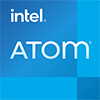
|
Intel Atom x6211E
Intel UHD Graphics 10th Gen (16 EU) @ 0,75 GHz |
||
Risultati stimati da PassMark CPU Mark
Alcune delle CPU elencate di seguito sono stati sottoposti a benchmarking da CPU-monkey. Tuttavia, la maggior parte delle CPU non sono state testate e i risultati sono stati stimati utilizzando una formula segreta di proprietà di CPU-monkey. Come tali, essi non riflettono con precisione i valori attuali di Passmark CPU Mark e non sono stati approvati da PAssMark Software Pty Ltd.

|
Intel Core i3-6157U
2C 4T @ 2,40 GHz |
||

|
Intel Core i7-920
4C 8T @ 2,66 GHz |
||

|
AMD A8-5600K
4C 4T @ 3,90 GHz |
||
|
|
Intel Celeron G5905
2C 2T @ 3,50 GHz |
||

|
Intel Celeron G5920
2C 2T @ 3,50 GHz |
||

|
Intel Core i7-860S
4C 8T @ 2,53 GHz |
||

|
Intel Atom C2750
8C 8T @ 2,60 GHz |
||
CPU-Z Benchmark 17 (Multi-Core)
Il benchmark CPU-Z misura le prestazioni di un processore misurando il tempo impiegato dal sistema per completare tutti i calcoli del benchmark. Più velocemente viene completato il benchmark, maggiore è il punteggio.

|
Intel Core i5-4200M
2C 4T @ 2,50 GHz |
||

|
Intel Celeron J4125
4C 4T @ 2,00 GHz |
||

|
AMD Phenom II X6 1065T
6C 6T @ 2,90 GHz |
||
|
|
Intel Celeron G5905
2C 2T @ 3,50 GHz |
||

|
Intel Core i5-5300U
2C 4T @ 2,30 GHz |
||

|
Intel Core i7-4600U
2C 4T @ 2,10 GHz |
||

|
Intel Core 2 Quad Q6600
4C 4T @ 2,40 GHz |
||
Cinebench R15 (Single-Core)
Cinebench R15 è il successore di Cinebench 11.5 ed è anch'esso basato su Cinema 4D. Cinema 4D è un software usato a livello mondiale per creare forme in 3D. Il test single-core utilizza solo un nucleo elaborativo della CPU. A tal fine, il numero di nuclei elaborativi o la capacità di hyperthreading non sono rilevanti.

|
Intel Core i5-4670
4C 4T @ 3,80 GHz |
||

|
Intel Core i5-4670K
4C 4T @ 3,80 GHz |
||

|
Intel Core i7-4900MQ
4C 8T @ 3,80 GHz |
||
|
|
Intel Celeron G5905
2C 2T @ 3,50 GHz |
||

|
AMD Ryzen 5 1600
6C 12T @ 3,60 GHz |
||
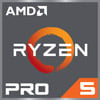
|
AMD Ryzen 5 PRO 1600
6C 12T @ 3,60 GHz |
||

|
Intel Core i5-6585R
4C 4T @ 3,60 GHz |
||
Cinebench R15 (Multi-Core)
Cinebench R15 è il successore di Cinebench 11.5 ed è anch'esso basato su Cinema 4D. Cinema 4D è un software usato a livello mondiale per creare forme in 3D. Il test multi-core coinvolge tutti i nuclei elaborativi della CPU e si avvale del hyperthreading.

|
Intel Core i5-6198DU
2C 4T @ 2,70 GHz |
||

|
Intel Core i5-8310Y
2C 4T @ 3,00 GHz |
||

|
AMD Athlon II X4 740
4C 4T @ 3,70 GHz |
||
|
|
Intel Celeron G5905
2C 2T @ 3,50 GHz |
||

|
Intel Core i5-6260U
2C 4T @ 2,70 GHz |
||

|
Intel Core i3-7130U
2C 4T @ 2,70 GHz |
||

|
Intel Core i5-5300U
2C 4T @ 2,70 GHz |
||
Benchmarks

Cinebench R23 (SC)
586 inserimenti
586 inserimenti

Cinebench R23 (MC)
565 inserimenti
565 inserimenti

Geekbench 5 (SC)
2.488 inserimenti
2.488 inserimenti

Geekbench 5 (MC)
2.461 inserimenti
2.461 inserimenti

Cinebench R20 (SC)
656 inserimenti
656 inserimenti

Cinebench R20 (MC)
604 inserimenti
604 inserimenti

FP32 SP (iGPU)
2.026 inserimenti
2.026 inserimenti

PassMark CPU-Mark
2.392 inserimenti
2.392 inserimenti

CPU-Z Benchmark 17 (MC)
733 inserimenti
733 inserimenti

Cinebench R15 (SC)
1.106 inserimenti
1.106 inserimenti

Cinebench R15 (MC)
1.101 inserimenti
1.101 inserimenti
Confronti più popolari
Torna all'indice




